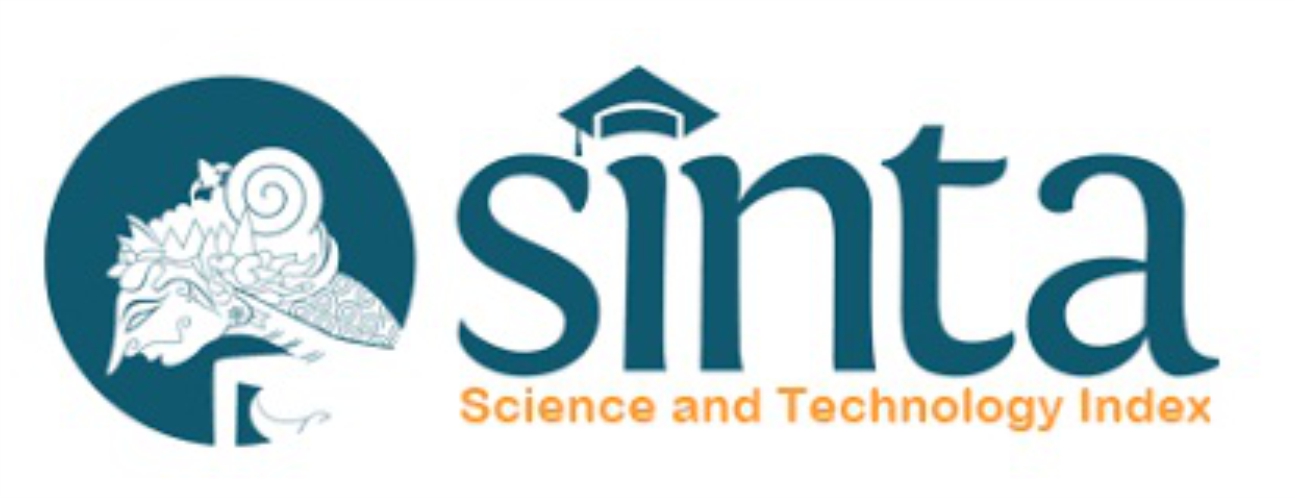The Role of Substance P in Chronic Low Back Pain (CLBP)
Abstract
Low Back Pain is one of the disease that causing global disability in the worldwide. In the past 10 years, prevalence of LBP has not decreased, it makes global burden increase substantially. Chronic low back pain(CLBP) is pain that is almost experienced daily by patients in the lower back region in a period of more than 3 months. Chronic low back pain is a mixture of pain that arises through nociceptive and neuropathic mechanisms. Over the past decade, numerous guidelines have been used in the management of CLBP. Problems that are still a controversy include the management of pain. The mechanism of many treatment measures is still in the low to moderate effectiveness stage, so that the pain management target is not optimal. Substance P is a neuropeptide that release both in acute and chronic pain. Therefore study about mechanisms that affect SP release may show important information regarding pathological alterations in pain perception.
Full Text:
PDFReferences
Morlion B. Chronic low back pain: pharmacological, interventional and surgical strategies. Nat Rev Neurol. 2013;9(8):462–73.
Allegri M, Montella S, Salici F, Valente A, Marchesini M, Compagnone C, et al. Mechanisms of low back pain: a guide for diagnosis and therapy. F1000Research. 2016;5:1530.
Khan AN, Jacobsen HE, Khan J, Filippi CG, Levine M, Lehman RA, et al. Inflammatory biomarkers of low back pain and disc degeneration: a review. Ann N Y Acad Sci. 2017;1410(1):68–84.
Hoy D, March L, Woolf A, Blyth F, Brooks P, Smith E, et al. The global burden of neck pain: estimates from the global burden of disease 2010 study. Ann Rheum Dis. 2014;73(7):1309–15.
Almeida DC, Kraychete DC. Low back pain – a diagnostic approach. Rev Dor. 2017;18(2):173–7.
Freemont AJ. The cellular pathobiology of the degenerate intervertebral disc and discogenic back pain. Rheumatology. 2009;48(1):5–10.
Freynhagen R, Baron R, Tölle T, Stemmler E, Gockel U, Stevens M, et al. Screening of neuropathic pain components in patients with chronic back pain associated with nerve root compression: a prospective observational pilot study (MIPORT). Curr Med Res Opin. 2006;22(3):529–37.
Freynhagen R, Baron R. The evaluation of neuropathic components in low back pain. Curr Pain Headache Rep. 2009;13(3):185–90.
Lin Q, Li D, Xu X, Zou X, Fang L. Roles of TRPV1 and neuropeptidergic receptors in dorsal root reflex-mediated neurogenic inflammation induced by intradermal injection of capsaicin. Mol Pain. 2007;3.
Ji RR, Xu Z, Gao Y. Emerging targets in neuroinflammation- driven chronic pain. Nat Publ Gr. 2014;13(7):533–48.
Zieglgänsberger W. Substance P and pain chronicity. Cell Tissue Res. 2019;375(1):227–41.
Meliala, L; Suryamiharja, A; Purba, J; Sadeli H. Patofisiologi nyeri punggung bawah. In: Nyeri punggung bawah. PERDOSSI; 2003. p. 17–28.
Li D, Ren Y, Xu X, Zou X, Fang L, Lin Q. Calcitonin Gene-related Peptide Driven by Dorsal Root Reflexes. J Pain. 2008;9(12):1155–68.
Bannister K, Kucharczyk M, Dickenson AH. Hopes for the future of pain control. Pain Ther. 2017;6(2):117–28.
Marvizón JCG. Substance P release in the dorsal horn assessed by receptor internalization: NMDA receptors counteract a tonic inhibition by GABA B receptors. Eur J Neurosci. 1999;11(2):417–26.
Wong AY, Karppinen J, Samartzis D. Low back pain in older adults: risk factors, management options and future directions. Scoliosis Spinal Disord. 2017;12(1):1–23.
Dworkin RH, O’Connor AB, Audette J, Baron R, Gourlay GK, Haanpää ML, et al. Recommendations for the pharmacological management of neuropathic pain: an overview and literature update. Mayo Clin Proc. 2010;85(3 SUPPL.).
Baron R, Binder A, Attal N, Casale R, Dickenson AH, Treede RD. Neuropathic low back pain in clinical practice. Eur J Pain (United Kingdom). 2016;20(6):861–73.
Wang H, Woolf CJ. Pain TRPs. Neuron. 2005;46(1):9–12.
Meyer RA, Ringkap M, Campbell JN, Raja SN. Peripheral mechanisms of cutaneous nociception. In: McMahon SB, Koltzenburg M, editors. Wall and Melzack’s Textbook of Pain. Philadelphia: Elsevier; 2008. p. 3–34.
Basbaum AI, Bautista DM, Scherrer G, Julius D. Cellular and molecular mechanisms of pain. Cell. 2009;139(2):267–84.
Honoré P, Menning PM, Rogers SD, Nichols ML, Basbaum AI, Besson J-M, et al. Spinal Substance P Receptor Expression and Internalization in Acute, Short-Term, and Long-Term Inflammatory Pain States. J Neurosci. 2018;19(17):7670–8.
Gangadharan V, Kuner R. Pain hypersensitivity mechanisms at a glance. Dis Model Mech. 2013;6(4):889–95.
Yam MF, Loh YC, Tan CS, Adam SK, Manan NA, Basir R. General pathways of pain sensation and the major neurotransmitters involved in pain regulation. Int J Mol Sci. 2018;19(8).
Dong X, Han S kyou, Zylka MJ, Simon MI, Anderson DJ. A diverse family of GPCRs expressed in specific subsets of nociceptive sensory neurons. Cell. 2001;106(5):619–32.
Rogoz K, Andersen HH, Kullander K, Lagerstrom MC. Glutamate, substance P, and calcitonin gene-related peptide cooperate in inflammation-induced heat hyperalgesia. Mol Pharmacol. 2013;85(2):322–34.
Sahbaie P, Shi X, Guo TZ, Qiao Y, Yeomans DC, Kingery WS, et al. Role of substance P signaling in enhanced nociceptive sensitization and local cytokine production after incision. Pain. 2009;145(3):341–9.
Fishbain DA, Cole B, Lewis JE, Gao J. What is the evidence that neuropathic pain is present in chronic low back pain and soft tissue syndromes? An evidence-based structured review. Pain Med (United States). 2014;15(1):4–15.
Sossin WS. Isoform specificity of protein kinase Cs in synaptic plasticity. Learn Mem. 2007;14(4):236–46.
Reichling DB, Levine JD. Critical role of nociceptor plasticity in chronic pain. Trends Neurosci. 2009;32(12):611–8.
Koes BW, Van Tulder M, Lin CWC, Macedo LG, McAuley J, Maher C. An updated overview of clinical guidelines for the management of non-specific low back pain in primary care. Eur Spine J. 2010;19(12):2075–94.
Buchbinder R, van Tulder M, Öberg B, Costa LM, Woolf A, Schoene M, et al. Low back pain: a call for action. Lancet. 2018;391(10137):2384–8.
Oliveira CB, Maher CG, Pinto RZ, Traeger AC, Lin CWC, Chenot JF, et al. Clinical practice guidelines for the management of non-specific low back pain in primary care: an updated overview. Eur Spine J. 2018;27(11):2791–803.
Laplante BL, Ketchum JM, Saullo TR, Depalma MJ. Multivariable Analysis of the Relationship between Pain Referral Patterns and the Source of Chronic Low Back Pain. Pain Physician. 2012;15(2):171–8.
Keller A, Hayden J, Bombardier C, Van Tulder M. Effect sizes of non-surgical treatments of non-specific low-back pain. Eur Spine J. 2007;16(11):1776–88.
Mannion AF, Balagué F, Pellisé F, Cedraschi C. Pain measurement in patients with low back pain. Nat Clin Pract Rheumatol. 2007;3(11):610–8.
Carey TS, Freburger JK, Holmes GM, Castel L, Darter J, Agans R, et al. A long way to go: Practice patterns and evidence in chronic low back pain care. Spine (Phila Pa 1976). 2009;34(7):718–24.
Van Tulder M, Becker A, Bekkering T, Breen A, Del Real MTG, Hutchinson A, et al. Chapter 3: european guidelines for the management of acute nonspecific low back pain in primary care. Eur Spine J. 2006;15(SUPPL. 2):169–91.
Hunskaar S, Fasmer OB, Hole K. Acetylsalicylic acid, paracetamol and morphine inhibit behavioral responses to intrathecally administered substance P or capsaicin. Life Sci. 1985;37(19):1835–41.
Björkman R, Hallman KM, Hedner J, Hedner T, Henning M. Acetaminophen blocks spinal hyperalgesia induced by NMDA and substance P. Pain. 1994;57(3):259–64.
Bujalska M. Effect of nitric oxide synthase inhibition on antinociceptive action of different doses of acetaminophen. Pol J Pharmacol. 2004;56(5):605–10.
Anderson BJ. Paracetamol (acetaminophen): mechanisms of action. Paediatr Anaesth. 2008;18(10):915–21.
Jozwiak-Bebenista M, Nowak JZ. Paracetamol: mechanism of action, applications and safety concern. Acta Pol Pharm - Drug Res. 2014;71(1):11–23.
Sharma C V., Mehta V. Paracetamol: mechanisms and updates. Contin Educ Anaesthesia, Crit Care Pain. 2014;14(4):153–8.
Janicki PK, Jeske-Janicka M. Relevance of nitric oxide in pain mechanisms and pain management. Curr Rev Pain. 2007;2(4):211–6
.
Van Euler Us, Gaddum J. An unidentified depressor substancein certain tissue extracts. J Physiol 7274–87). 1931;72:74–87.
Mashaghi A, Marmalidou A, Tehrani M, Grace PM, Pothoulakis C, Dana R. Neuropeptide substance P and the immune response. Cell Mol Life Sci. 2016;73(22):4249–64.
Suvas S. Role of substance P neuropeptide in inflammation, wound healing, and tissue homeostasis. J Immunol. 2017;199(5):1543–52.
Chang M, Leeman S. Isolation of a siaIogogic peptide from bovine hypothalamic tissue and its characterization as substance P. J Biol Chem. 1970;245(18):4784–90.
Severini C, Improta G, Falconieri-Erspamer G, Salvadori S, Erspamer V. The tachykinin peptide family . Pharmacol Rev. 2002;54(2):285–322.
Pennefather JN, Lecci A, Candenas ML, Patak E, Pinto FM, Alberto C. Tachykinins and tachykinin receptors : a growing family. Life Sci. 2004;74(12):1445–63.
Hokfelt T, Vincent S, Dalsgaard C., Skirboll L, Johansson O, Schultzberg M, et al. Distribution of substance P in brain and periphery and its possible role as a co-transmitter . Ciba Found Symp. 1982;91:84–106.
Ribeiro-da-silva A, Hökfelt T. Neuroanatomical localisation of substance P in the CNS and sensory. Neuropeptides. 2000;34(5):256–71.
Ganjiwale A, Cowsik S. Molecular recognition of tachykinin receptor selective agonists : insights from structural studies . Mini Rev Med Chem. 2013;13(14):2036–46.
Maggi CA. The troubled story of tachykinins and neurokinins. TiPS. 2000;21(May):173–5.
Camilli P De, Jahn R. Pathways to regulated exocytosis in neurons. Annu Rev Physiol. 1990;52:625–45.
Skidgel RA, Engelbrecht S, Johnson AR, Erdos EG. Hydrolysis of Substance P and Neurotensin by Converting Enzyme and Neutral Endopeptidase. Peptides. 1984;5:769–76.
Douglas SD, Leeman SE. Neurokinin-1 receptor: Functional significance in the immune system in reference to selected infections and inflammation. Ann N Y Acad Sci. 2011;1217(1):83–95.
DOI: https://doi.org/10.18860/jip.v4i2.8163
Refbacks
- There are currently no refbacks.
Copyright (c) 2020 Yusnita Rachmawati
© 2023 Journal of Islamic Pharmacy










